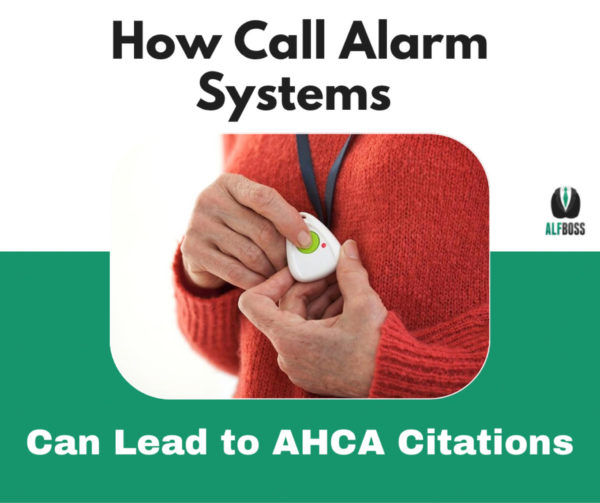
In the world of assisted living, the safety and comfort of residents are paramount. One tool that has become increasingly common in many facilities is the resident call alarm system. While not a requirement set by the Agency for Health Care Administration (AHCA), these systems are intended to enhance resident safety by allowing them to alert staff when they need immediate assistance. However, as beneficial as they may seem, it’s crucial for facility operators to understand that adding non-mandated systems also means taking on additional responsibilities.
The Benefits of Call Alarms
Resident call alarms can be tremendously beneficial. They provide residents with the means to request help with the push of a button, offering peace of mind to both the residents themselves and their families. In scenarios ranging from medical emergencies to needing help with daily activities, the quick communication facilitated by these systems can significantly enhance the quality of care.
The Potential Pitfalls
However, the installation of these systems comes with its own set of challenges. The primary concern is the facility’s response time. When I conduct mock surveys in facilities, I often test the response time to these alarms. Alarmingly, it’s not uncommon to find that either no one responds, or the response times are excessively long. This not only defeats the purpose of having a call system but can also lead to significant compliance issues. AHCA is aware of the capabilities of modern digital call systems, which can track and report response times. Facilities can be, and are, asked to produce these logs during inspections, potentially exposing them to citations for long response times.
Best Practices for Implementing Call Systems.
To ensure that resident call alarms are an asset rather than a liability, facilities must adopt a robust approach to managing these systems. Here are several strategies to effectively implement and maintain call alarm systems in assisted living facilities:
1. Staff Training and Protocols: Ensure that all staff members are thoroughly trained on the importance of swift responses to call alarms. Establish clear protocols that dictate how to respond to an alarm and the expected time frame for responses. Regular drills can help reinforce these protocols and keep staff prepared.
2. Adequate Staffing: Response time is often directly related to staffing levels. Facilities must evaluate their resident-to-staff ratio to ensure there are enough team members available to respond promptly to alarms at any time of day or night.
3. Regular System Testing and Maintenance: Just as important as having the system is maintaining it. Facilities should conduct regular tests to ensure that all components of the call system are functioning correctly. This includes checking speakers, buttons, and receivers, as well as ensuring that the system software is up to date.
4. Monitoring and Documentation: Implement a system to monitor response times and document each incident’s details. This data can be invaluable during AHCA inspections and can help facilities identify areas for improvement. Using digital systems that automatically log response times can streamline this process.
5. Feedback from Residents and Staff: Regularly solicit feedback from both residents and staff regarding the call system. Residents can provide insights into their satisfaction with the response times, while staff can offer perspectives on any challenges they face with the system’s implementation.
6. Continuous Improvement: Use the data and feedback collected to continuously improve response strategies. Analyze trends in response times and identify specific times or conditions under which responses lag, then adjust staffing or protocols accordingly.
Conclusion
Resident call alarms can indeed be a significant asset in assisted living facilities, enhancing resident safety and peace of mind for their families. However, their effectiveness is heavily dependent on the facility’s ability to respond promptly and effectively. By implementing sound practices around these systems, facilities can ensure that they serve their intended purpose without becoming a liability.
By promoting a disciplined approach to the use of call alarms, assisted living facilities can enhance their care quality and compliance, turning a potential challenge into a definitive advantage in resident care.
